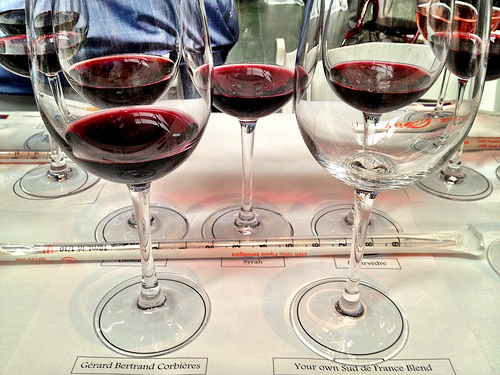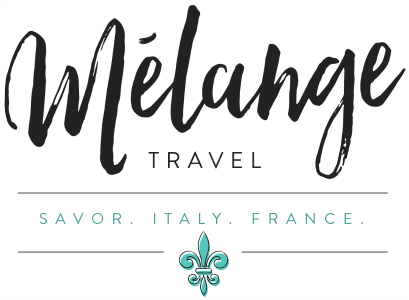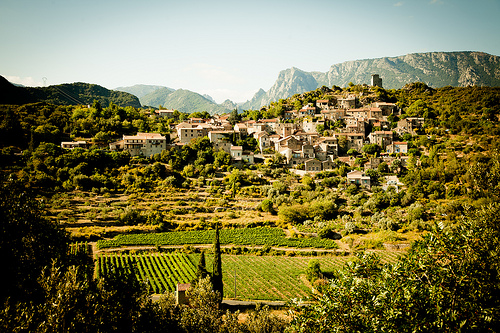A few months ago, I attended a fun and informative event hosted by Sud de France which showcased the French wine region known as Languedoc-Roussillon in southern France. First, let me just say – ooohh weee, those French really know how to throw a party!
We sampled food from the region, like black truffle canapes and had a salt tasting from the famed Le Saunier de Camargue. There was an awesome band called “The Hot Sardines” that played Chansons Françaises while people danced, drank and laughed. And there was even a tap dancer!

Part of the festivities included a very informative wine seminar with a wine blending class with a rep from Gérard Bertrand Wines. Yes sir, I got to make my very own blend of three different reds from the region – Syrah, Grenache and Mourvedre. Certainly nothing you’d buy in a fine wine store, but not bad for everyday drinking, if I do say so myself.
> Click here to watch my short wine blending video
I’ll be doing another post on all the great activities and places to visit within this lesser-known region, but today I wanted to focus on the Languedoc-Roussillon wines.
This wine region, which is really two separate areas of Southern France, has a ton of history. In fact, it’s one of the largest and oldest growing regions, not only in France, but in the world. Some of the over 700,000 acres of vines were planted in the fifth-century BC.
Many years ago, this area was known for producing cheap wine in large quantity. But these days, not only are the over 100 varieties of grapes growing, but the quality and popularity as well. Over one third of France’s wine production now comes from the Sud de France, which produces red, white, rosé, sparkling and sweet wine.
Famous mostly for its reds, the region is really producing some very interesting, reasonably priced wines. And since I’m all about value in both my wine and my travels, this area really appeals to me. I’m a red wine lover, so that’s what I’ll be focused on today – but the area does make good whites and rosés as well.
It was very appropriate to attend a wine blending, because most of the red wine from the Languedoc-Roussillon are blends of Grenache, Mourvedre, Cinsault, Carignan, Syrah, Cab Franc (a fave) and Merlot grapes.
Other than the very diverse soils, one rather unique presence in Languedoc wines is something called garrigue. It’s a term for bushes and herbs that grow wild in the area which impart to the wine a distinctive herbal aroma and flavor. These intense reds that are baked by the hot sun, which shines for over 2500 hours a year, pair very well with local food specialties. Think seafood, fruits and vegetables, wild mushrooms and of course – cheese.
One of the most common types of wine is known as Vins du Pays, which means ‘local wine’. But there are also many appellations, known as AOC wines. Over 36 to be exact.
Though it would take about 40 posts to explain the intricacies of the history, grapes, wine and terroir of this region, I will give a brief mention of a few areas, which are also located near interesting cities, villages or cultural attractions. The goal would be to combine a visit to the wine region with other attractions.
- Minervois
This growing area is located in the Western Languedoc region and near the Canal du Midi, the city of Carcasonne and village of Minerve. Vines have Roman roots and produce full bodied reds, that are required to be a blend. Wines have good structure when consumed young, but aging for 2-3 years results in more tannic, silky wine.
- Corbières
Located a bit closer to the sea, this large appellation is near the towns of Narbonne and Béziers. Here you can find fine red wines that are rich, spicy and full, which age from 3-7 years.
- Costières de Nîmes
The best way to learn about and sample the wines from this region is by visiting local producers and vineyards during your travels to southern France.
For more information on the region’s wine and food products, visit Sud de France.com
Thinking about a custom wine tour or tasting? Get in touch so we can work together and design the perfect experience!

